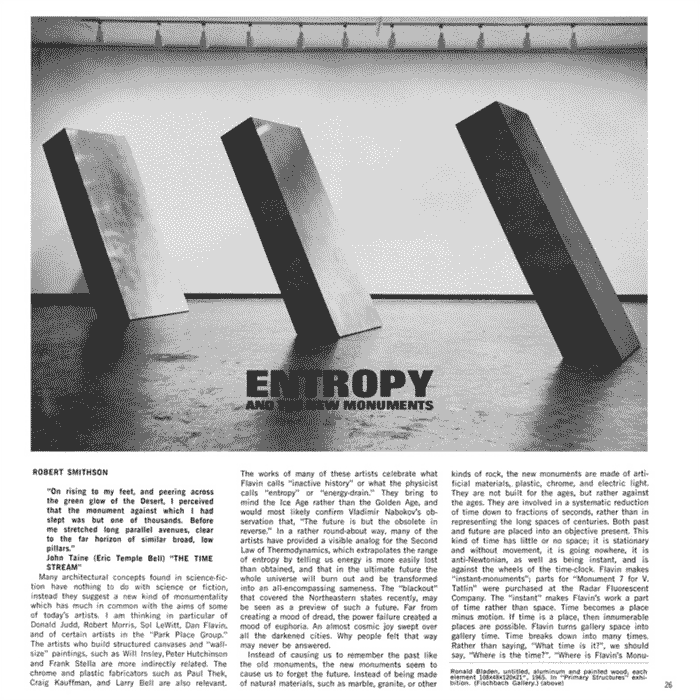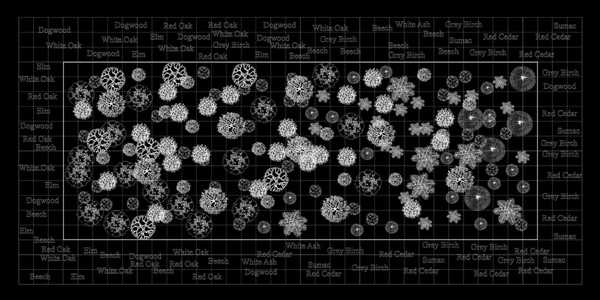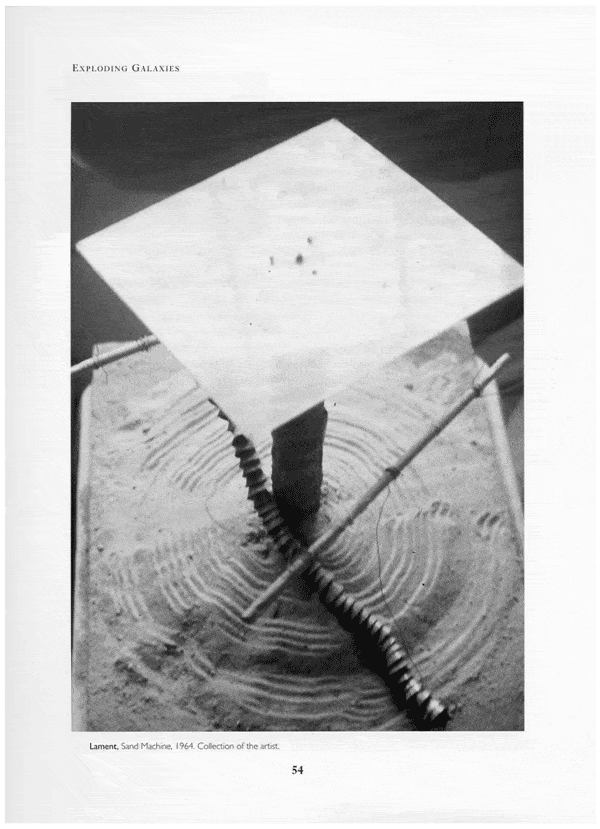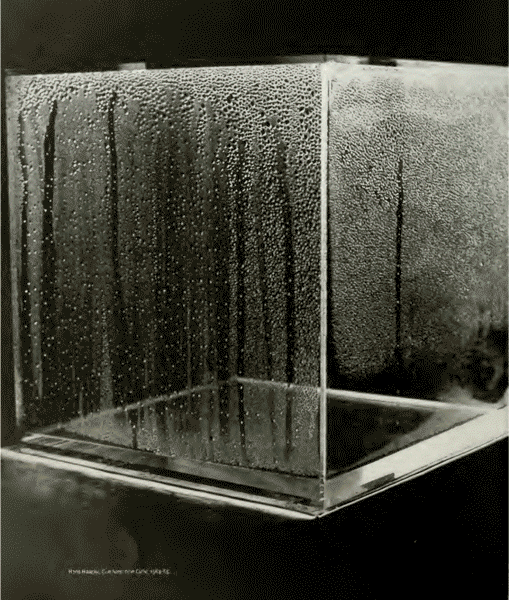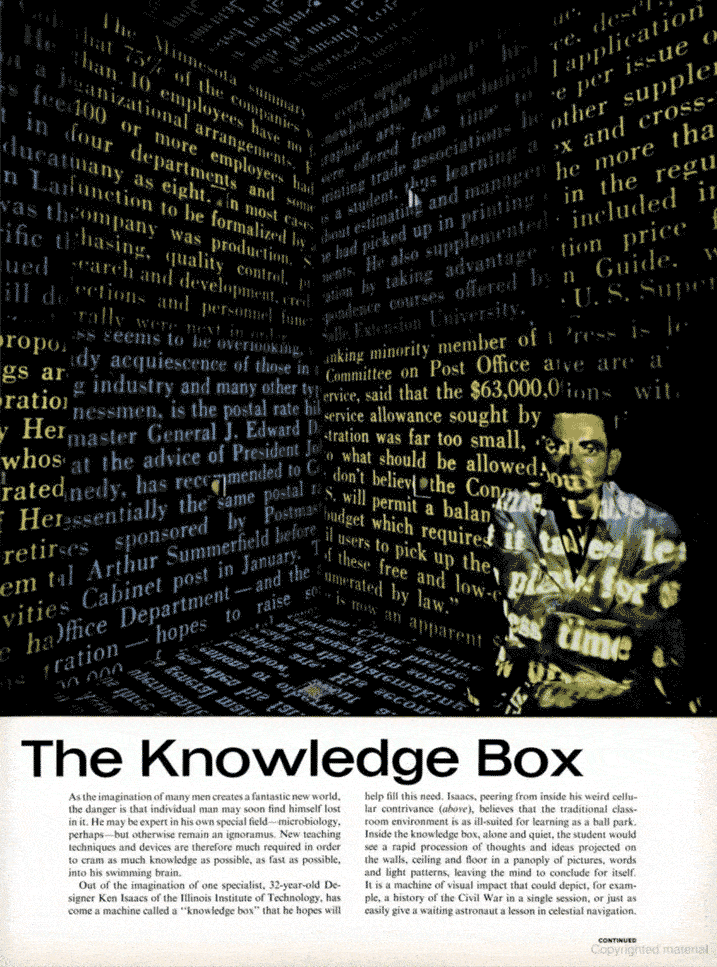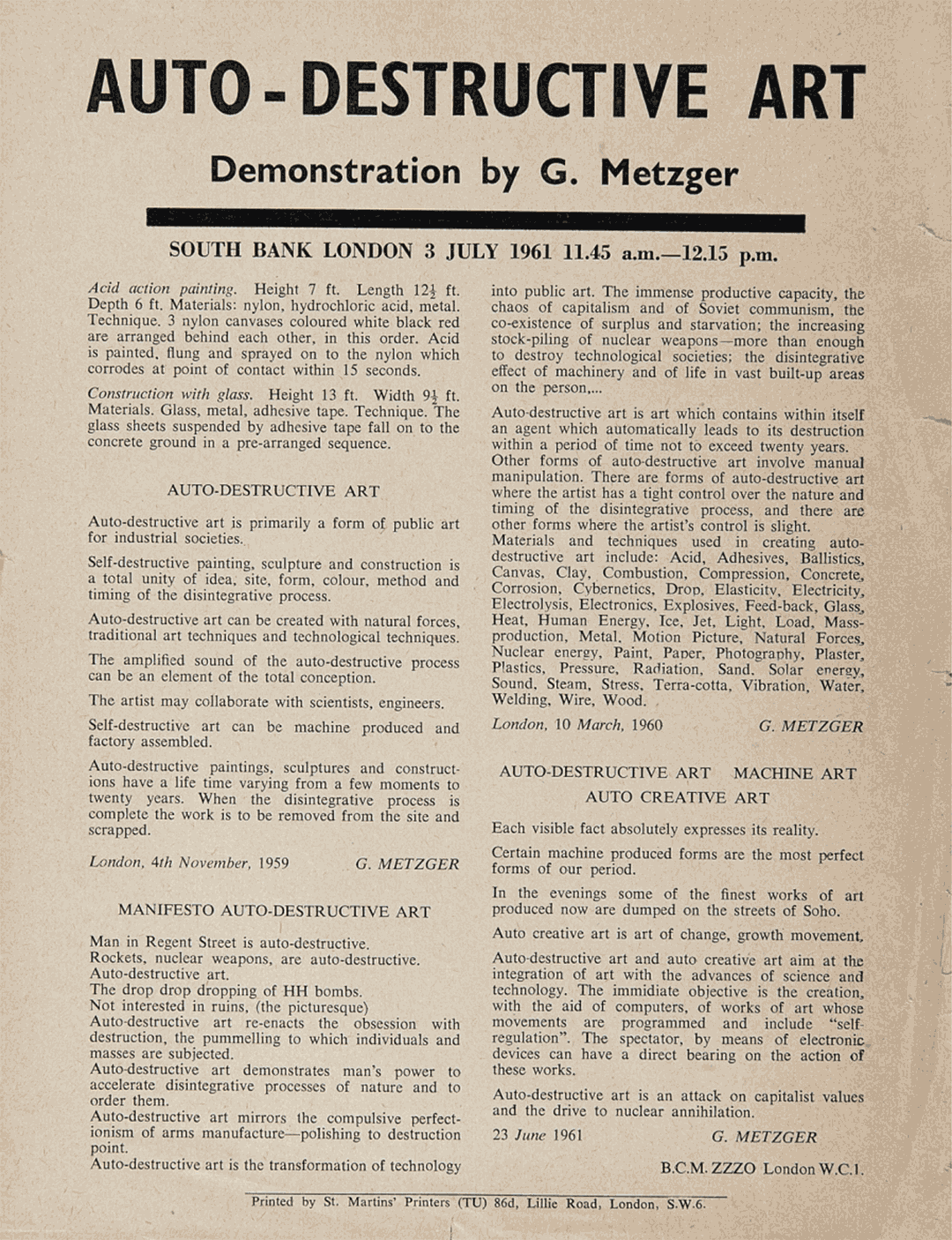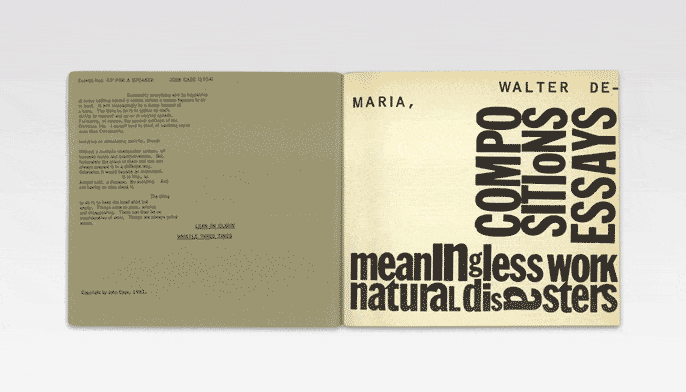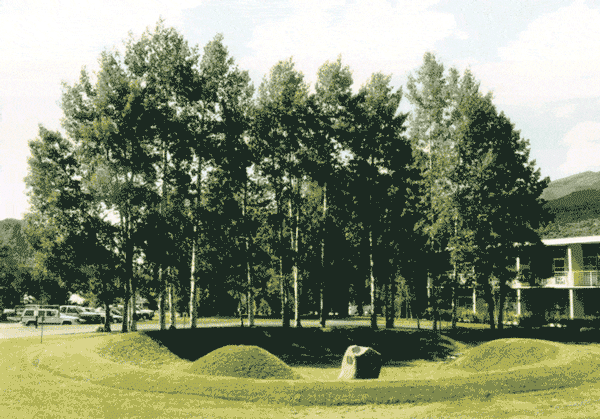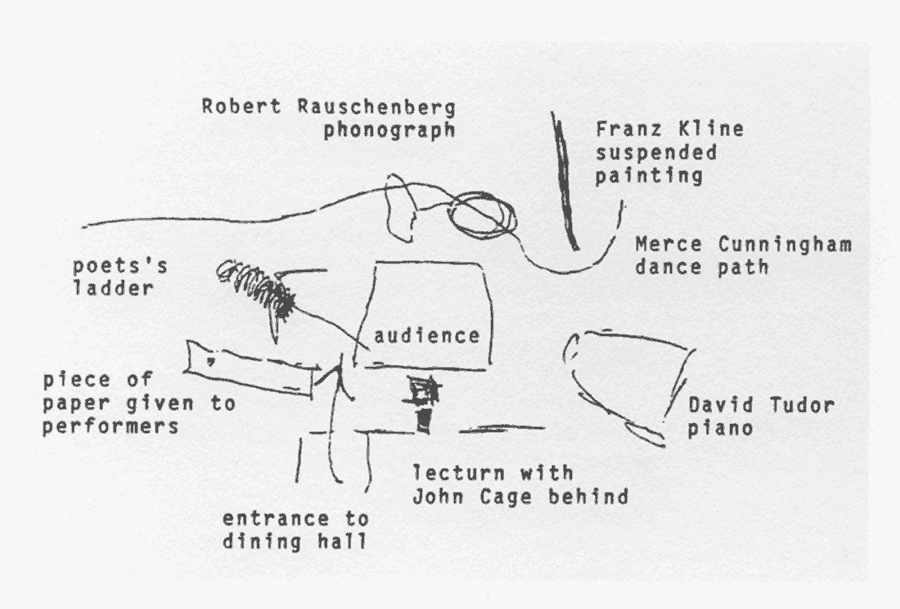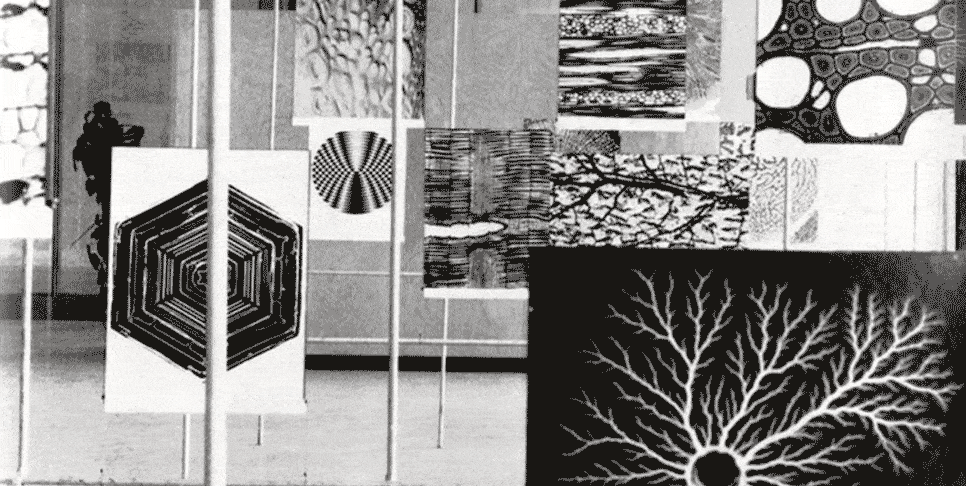
|
Pages 47 and 48 of Artforum, vol. 7, no. 1 (September 1968), New York. Accessed here, June 2021. |
|
A sense of the Earth as a map undergoing disruption leads the artist to the realization that nothing is. certain or formal. Language itself becomes mountains of symbolic debris.
Robert Smithson
“Like his artistic works, [Robert] Smithson’s writings of the later 1960s combine eclecticism, imaginativeness and irony in their critical address to the categories and protocols of a more standard Modernist aesthetics. His early ‘earth projects’ were not simply proposals for forms of site-specific work; more significantly, they were strategic incursions into the no-man’s-land between the aesthetic preserves of Modernism and the disregarded margins of the modern industrial world. In turn, Smithson explored the natural world as the ground on which the ideological character of our concepts is revealed.”
|
Charles Harrison, Paul Wood (eds.) — “Robert Smithson (1938–1973) ‘Sedimentation of the Mind: Earth Projects”, in Art in Theory: 1900–1990. An Anthology of Changing Ideas (Blackwell, Oxford, 1992), 863–864. |
|
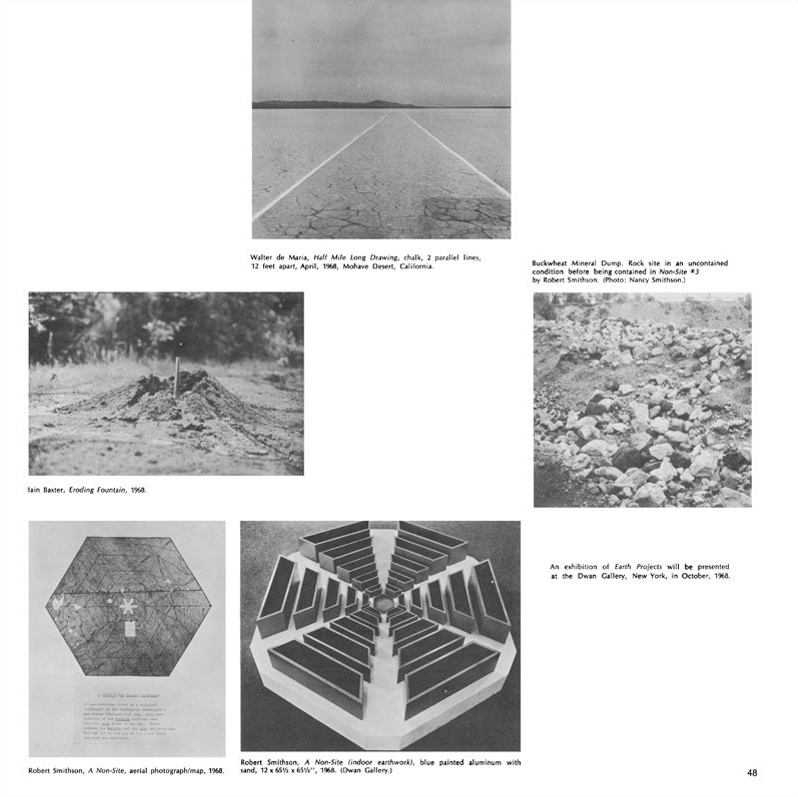

A Sedimentation of the Mind:
Earth Proposals
Robert Smithson
Echoing the “Groundworks” timeline: 1968
“The earth's surface and the figments of the mind have a way of disintegrating into discrete regions of art. Various agents, both fictional and real, somehow trade places with each other – one cannot avoid muddy thinking when it comes to earth projects, or what I will call ‘abstract geology.’ One's mind and the earth are in a constant state of erosion, mental rivers wear away abstract banks, brain waves undermine cliffs of thought, ideas decompose into stones of unknowing, and conceptual crystallizations break apart into deposits of gritty reason. Vast moving faculties occur in this geological miasma, and they move in the most physical way. This movement seems motionless, yet it crushes the landscape of logic under glacial reveries. This slow flowage makes one conscious of the turbidity of thinking. Slump, debris slides, avalanches all take place within the cracking limits of the brain. The entire body is pulled into the cerebral sediment, where particles and fragments make themselves known as solid consciousness. A bleached and fractured world surrounds the artist. To organize this mess of corrosion into patterns, grids, and subdivisions is an esthetic process that has scarcely been touched.
Robert Smithson — “A Sedimentation of the Mind: Earth Proposals”, Artforum, vol. 7, no. 1 (September 1968), New York, 45. Accessed here, June 2021.
|
“Once I called Smithson an important artist whose art is not important, because I liked his ideas and writings so much more than his sculpture.” (Lucy Lippard, “Two”, Studio International, October 1973). Robert Smithson’s texts were collected by Nancy Holt in the volume The Writings of Robert Smithson which she edited (published by New York University Press in 1979), and later by Jack Flam in Robert Smithson. The Collected Writings (University of California Press, 1996). |
“maat Explorations” is an ongoing programme that delves into the socio-cultural and environmental transformations stemming from the current bio crisis and ecological destruction. It provides an insight into the hard science of climate intervention and the creative speculations behind innovation-led research to safeguard our planetary co-existence.
Prominent in this strand is the installation Earth Bits – Sensing the Planetary, that opens access to the complex interconnectedness between the environmental and the energetic quests and its reverberation through decades of artistic production, political and cultural movements traced from the 1960s until today. On maat ext., a series of #groundworks hashtags introduce the critical explorations that feed into the complex interconnectivity between the environmental and energetic quests, and its reverberation through decades of artistic production, political and cultural movements traced from the 1960s until today. |


